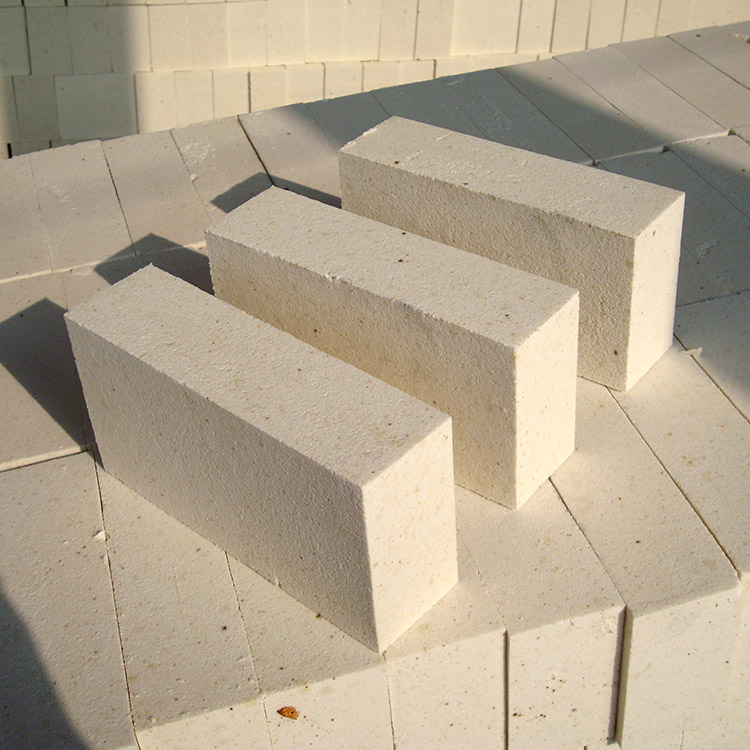High-Performance Refractory Fireclay Insulating Bricks: Enhancing Durability and Energy Efficiency in Industrial Kilns
2025-08-19
Product description
This article provides an in-depth analysis of Sunrise’s high-strength refractory fireclay insulating bricks and their critical role in industrial kiln applications. Emphasizing key performance attributes such as a maximum operating temperature of 1200°C, low thermal conductivity, and minimal linear thermal expansion, the discussion highlights how these factors contribute to energy savings and prolonged equipment lifespan. Addressing common misconceptions, including the prohibition of direct flame contact, the article integrates case studies from metallurgy and ceramics industries to guide engineers in making informed material selections and optimizing insulation layer configurations. Ultimately, it offers practical recommendations to ensure stable, long-term kiln operation, improve energy utilization, and reduce maintenance costs, serving as a valuable reference for industrial kiln design and refurbishment projects.
High-Performance Refractory Fireclay Insulating Bricks for Industrial Kilns
Industrial kilns demand materials that not only withstand extreme temperatures but also contribute to energy efficiency and equipment longevity. Sunrise Company’s high-strength refractory fireclay insulating bricks are engineered for durability and thermal stability, making them an optimal choice for metallurgical, ceramic, and other high-temperature industrial applications.
Key Technical Features
These refractory fireclay bricks are designed to perform reliably at temperatures up to 1200°C (2192°F). Their intrinsic properties significantly impact kiln operation efficiency:
- Low Thermal Conductivity: Around 0.3 W/m·K at 1000°C, meaning reduced heat loss and improved energy conservation.
- Minimal Linear Thermal Expansion: Typically less than 0.3% at peak temperature, effectively minimizing structural stresses and preventing premature cracking.
- High Mechanical Strength: Compressive strength surpasses 40 MPa after firing, ensuring robust resistance to mechanical wear and kiln strain.
Avoiding Common Mistakes: Fire Exposure Guidelines
It is crucial to recognize that fireclay insulating bricks are engineered for heat retention through indirect contact with flames. Direct flame impingement can cause rapid deterioration and reduced lifespan. Engineers should ensure proper burner configuration to eliminate flame hotspots on insulating surfaces, combining refractory lining design with combustion controls.
Performance Parameters Table
| Parameter |
Typical Value |
Industry Benchmark Range |
| Maximum Operating Temperature |
1200°C (2192°F) |
1100-1300°C |
| Thermal Conductivity @ 1000°C |
0.3 W/m·K |
0.25-0.35 W/m·K |
| Linear Thermal Expansion (ΔL/L) |
0.25% |
0.2%-0.3% |
| Compressive Strength (After Firing) |
40 MPa |
30-50 MPa |
| Bulk Density |
1.6-1.8 g/cm³ |
1.5-2.0 g/cm³ |
Engineering Best Practices: Material Selection Checklist
To guarantee kiln integrity and operational efficiency, engineers and technical decision-makers should consider the following checklist when specifying refractory fireclay insulating bricks:
- Application Temperature: Confirm the maximum temperature does not exceed 1200°C to maintain material stability.
- Thermal Shock Resistance: Evaluate the brick's capacity to withstand rapid temperature changes common in cyclic kiln operations.
- Heat Loss Minimization: Prioritize bricks with low thermal conductivity to enhance energy savings.
- Dimensional Stability: Ensure minimal thermal expansion to reduce structural fatigue in the insulating layer.
- Compatibility with Adjacent Materials: Check chemical and physical compatibility with adjoining refractories to avoid interface failures.
- Mechanical Strength: Assess compressive strength to handle expected mechanical stresses during installation and operation.
- Installation Conditions: Plan for correct installation to avoid flame impingement and ensure proper insulation thickness.
Confirming these factors during specification reduces downtime, maintenance costs, and improves kiln life cycle economics.
Application Insights and Industry Use Cases
In metallurgical furnaces, Sunrise’s refractory fireclay bricks have demonstrated up to 15% savings in fuel consumption, attributed to enhanced insulation properties reducing thermal leakage. Ceramic kiln retrofits using these bricks report improved temperature uniformity and a significant drop in refractory failure rates over three years of continuous operation.
Note: Avoid direct flame contact to preserve insulating brick integrity; incorporate appropriate burner adjustments and refractory lining designs to optimize kiln thermal performance.
Selecting high-quality refractory fireclay insulating bricks like those from Sunrise is a strategic investment that aligns with sustainable industrial practices—reducing energy consumption, extending equipment lifespan, and lowering maintenance overhead. This technology-driven approach empowers engineers to deliver operational excellence and environmental compliance.

Partner with Sunrise for Reliable Thermal Insulation Solutions
Harness Sunrise’s proven expertise to optimize your kiln insulation systems. Discover how our refractory fireclay insulating bricks can contribute to a long-term, energy-efficient, and stable kiln operation. Engineers and technical buyers worldwide trust our products for their balance of performance and reliability.


